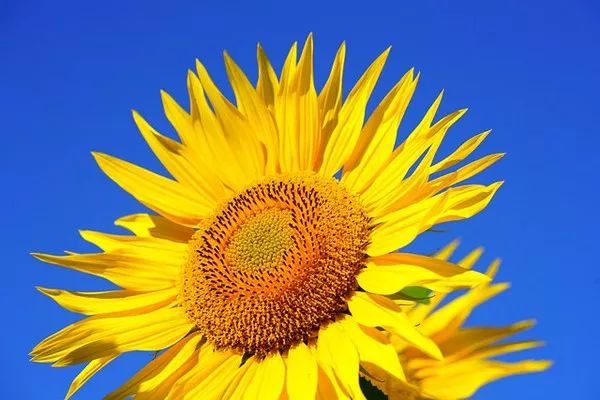In the vast tapestry of the botanical world, few flowers captivate the imagination and evoke feelings of warmth and vitality quite like the sunflower. With its vibrant hues and striking appearance, the sunflower stands as a symbol of resilience, adorning fields and gardens with its majestic presence. But what exactly defines a sunflower, and what sets it apart from other floral species? In this article, we embark on a journey to unravel the intricacies of sunflowers, exploring their taxonomy, characteristics, and cultural significance.
Taxonomic Classification: Unraveling the Identity of Sunflowers
To understand the essence of sunflowers, we must first delve into their taxonomic classification. Sunflowers belong to the genus Helianthus, which is part of the Asteraceae family, commonly known as the aster, daisy, or sunflower family. Within the genus Helianthus, there are approximately 70 species, ranging from annuals to perennials, each with its own unique characteristics.
The most well-known species within the genus Helianthus is Helianthus annuus, commonly referred to as the common sunflower or simply sunflower. This species is celebrated for its large, daisy-like flower heads characterized by vibrant yellow ray florets surrounding a central disk of smaller disc florets. However, it’s important to note that not all sunflowers conform to this stereotypical image. There are several other species within the genus Helianthus that exhibit variations in flower color, size, and morphology.
Morphological Features: Deciphering the Anatomy of Sunflowers
At the heart of the sunflower’s allure lies its distinctive morphology. A typical sunflower plant consists of a sturdy stem adorned with large, broad leaves that alternate along its length. At the apex of the stem sits the flower head, which is composed of numerous individual flowers densely packed together in a spiral pattern.
The outer ring of the flower head comprises the ray florets, which are often brightly colored and serve to attract pollinators. These ray florets are sterile and lack reproductive organs. In contrast, the central portion of the flower head consists of disc florets, each containing reproductive structures such as stamens and pistils. It is within these disc florets that the process of pollination and seed formation takes place.
One of the most remarkable features of sunflowers is their ability to exhibit heliotropism, a phenomenon where the flower heads track the movement of the sun across the sky. This behavior is facilitated by specialized cells in the stem known as pulvini, which respond to changes in light intensity by causing the flower head to tilt towards the sun. While the precise mechanisms behind heliotropism are still being studied, it is believed to enhance the plant’s ability to absorb sunlight for photosynthesis and attract pollinators.
Cultural Significance: Sunflowers in Art, Mythology, and Beyond
Beyond their botanical attributes, sunflowers hold a rich tapestry of cultural significance spanning centuries of human history. In many ancient cultures, sunflowers were revered as symbols of solar deities and worshipped for their association with light, warmth, and fertility. For instance, the ancient Incas of South America considered sunflowers to be sacred and often depicted them in religious ceremonies and art.
In the realm of art, sunflowers have inspired countless masterpieces, most notably Vincent van Gogh’s iconic series of paintings titled “Sunflowers.” Van Gogh’s vibrant and expressive depictions of sunflowers have become synonymous with the artist himself, reflecting his fascination with the interplay of color, light, and emotion.
In modern times, sunflowers continue to hold a special place in popular culture, symbolizing optimism, vitality, and growth. From decorative motifs in interior design to motifs in literature and music, the imagery of sunflowers permeates various facets of contemporary society, serving as a timeless reminder of nature’s beauty and resilience.
Ecological Role: Nurturing Biodiversity and Ecosystem Health
In addition to their cultural significance, sunflowers play a crucial ecological role in supporting biodiversity and ecosystem health. As native plants in North and Central America, sunflowers provide habitat and food for a diverse array of pollinators, including bees, butterflies, and birds. The nectar and pollen produced by sunflowers serve as vital resources for these organisms, helping to sustain their populations and contribute to the pollination of other plant species.
Furthermore, sunflowers are valued for their role in phytoremediation, a process whereby plants absorb and detoxify contaminants from the soil and water. Certain species of sunflowers, such as Helianthus annuus, have been found to accumulate heavy metals and other pollutants in their tissues, making them useful tools for environmental cleanup efforts in contaminated sites.
Conclusion
In conclusion, sunflowers stand as botanical marvels that embody the beauty, resilience, and cultural significance of the natural world. From their taxonomic classification and morphological features to their ecological role and cultural symbolism, sunflowers captivate our senses and inspire wonder at the intricate tapestry of life on Earth. As we continue to explore and appreciate the splendor of sunflowers, may we be reminded of the profound connections that bind us to the rhythms of nature and the enduring power of life’s radiant bloom.


